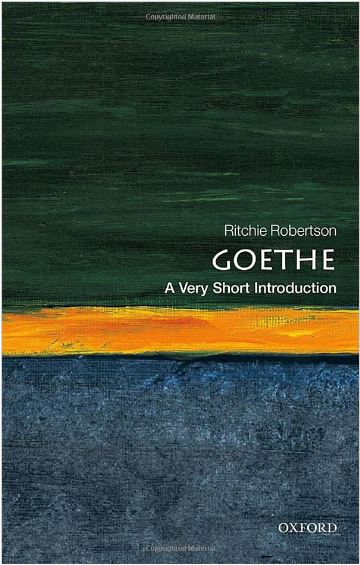 Goethe – A Very Short Introduction by Ritchie Robertson
Goethe – A Very Short Introduction by Ritchie Robertson
Reviewed by David Lorimer
In 1878, Matthew Arnold wrote of Goethe (1749-1832) that he was ‘in the width, depth, and richness of his criticism of life, by far our greatest modern man.’ My first acquaintance with him was at school when learning German with a brilliant teacher Roy Giles who brought his poetry alive, and then again at University where I read German. Much later, I came across his science through Brian Goodwin and others, which led back to Steiner and the idea of a science of qualities. This short book covers six main areas of Goethe’s life and work beginning with love and moving on to nature, classical art and world literature, politics, tragedy and religion.
It is appropriate to begin with love as this played such a great role in Goethe’s life and poetry. In his work he relates love of all kinds and at all stages of his life, with some women inaccessible and others where he had a much more physical relationship, sometimes described in graphic detail in his poetry. The journey to Rome in 1786 was hugely liberating, freeing him up from his administrative responsibilities in Weimar, where I once visited his house. The striking aspect is the contrast between the public rooms at the front and a very small rooms, including his bedroom, at the back. Goethe became famous at the early age of 25 with the publication of his bestselling novel The Sorrows of Young Werther. He joined the Duke of Weimar the following year, and the author describes the range of administrative duties involved with responsibilities for mining, road building, maintaining the army and finance. His practicality reminds one of Swedenborg, who was supervising engineering projects at the same time as recording his inner visions.
The chapter on nature is mainly concerned with his science. It is important, I think, to understand that Goethe was primarily a contemplative poet rather than a detached observer – hence his opposition to mechanised objectivity. He was highly sensuous and visual, leaving some 3,000 paintings and sketches. He was also influenced by the work of Spinoza and impressed by the dynamism and transformative capacity of nature. He tried to understand things from the inside out, hence his interest in form and emergence. Interestingly, he uses the word theory in its original Greek sense of contemplation or looking. The author gives an interesting explanation of Steigerung or intensification where Goethe refers to the task of distilling his individuality still further. He asks if Goethe was really a scientist, and it is here that he could have done with some more detailed references to current Goethean science in the work of Henri Bortoft and Arthur Zajonc. This is more sympathetic to a developmental rather than molecular approach to biology. Then, in connection with his theory of colour, there is a highly critical book written in the 1930s by Sir Arthur Eddington.
The chapter on classical art and world literature shows how Goethe regarded himself as a classicist even if some critics treat him as a romantic. He read French, Italian and English as well as Latin and classical Greek and translations from Persian and Asian literature. He had a particular sympathy for the Greeks, characterising their way of life as ‘freer, more spontaneous, closer to the senses, less intellectualised than the modern world.’ They celebrated the body as well as the mind, and Goethe was reluctant to prise these apart or indeed to separate himself from Nature. It was interesting to find out how little he thought of Dante – the devaluing of the physical world in Christianity might have something to do with this.
The chapter on tragedy compares Goethe’s work with other writers and analyses his major work. The most important point is his rejection of catharsis or false consolation and his insistence that his characters should rebound and do all the good they can. Goethe was also wary of conventional morality (he lived with Christiane Vulpius for many years before marrying her), taking Nature for his model, with its balance of creative and destructive energies. The author sees the redemption of Faust as due to his never abandoning desire and always striving for something that lay beyond him in terms of transformation and purification; also healing through the power of Nature. The author refers to the imaginative appeal for Goethe of the transmigration of souls without really taking it seriously. For me, dying and becoming is central not only to the life of Goethe, but to life in general.
